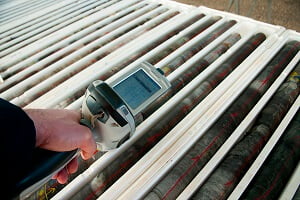Blog
Signs of Lead Paint and Tests to Confirm It
Posted on behalf of Peter T. Nicholl in Lead Paint Poisoning Published on June 19, 2019 and updated on March 6, 2022. Lead paint and asbestos are two substances that were very popular for a number of years before it was widely known they caused serious and sometimes life-threatening health problems. However, the odds of asbestos exposure occurring in a home built after the late 1970s are pretty low, while the odds of lead paint exposure could be high even in a house built after lead paint was outlawed. This is because the government only made it illegal to manufacture or buy lead paint. Many painters stocked up on lead-based paint before it was made illegal and continued using it. Some inspectors have found lead-based paint in homes built as recently as the 90s.
Lead paint and asbestos are two substances that were very popular for a number of years before it was widely known they caused serious and sometimes life-threatening health problems. However, the odds of asbestos exposure occurring in a home built after the late 1970s are pretty low, while the odds of lead paint exposure could be high even in a house built after lead paint was outlawed. This is because the government only made it illegal to manufacture or buy lead paint. Many painters stocked up on lead-based paint before it was made illegal and continued using it. Some inspectors have found lead-based paint in homes built as recently as the 90s.
Below, our trusted attorneys discuss how you can inspect a home for lead-based paint, the tests you can perform, and the signs you should look for that a house has lead paint. Contact us today to schedule a free consultation if you suffered lead poisoning due to the paint found in your home.
Signs of Lead Paint That are Easy to Spot
It is not easy to spot lead paint in the home. There is no smell or other blatant sign that lead is present in the paint on your walls, ceilings, or doors. Instead, you need to take a closer look at the items that are painted. You will want to be on the lookout for cracks, chipped paint, and areas that look like they have not been painted in years.
When lead paint deteriorates it will create a pattern on the wall or ceiling that looks like scales on a fish or reptile. Many contractors and home inspectors refer to this phenomenon as alligatoring. If you find a series of cracks that appear to be scales anywhere on your walls or ceilings, it is very likely that the paint that was used is lead-based.
You also need to look at areas of the home where painters might have failed to look if you hired one to find lead paint or remediate the problem. The painter you hired might have been the highest-rated on your local review site or social media, but he or she could still have made mistakes. It can be easy to overlook the sashes of basement windows, baseboards, inside closets and in the corners where the walls meet the ceiling.
Tests for Discovering Lead Paint
If you have the sinking suspicion that the paint on your home’s walls is lead-based, you will want to test for lead paint before trying to remediate the problem. You can begin the testing process on your own by going to your local home improvement store to pick up a paint testing kit that tests only the surface paint of your walls and ceiling.
Using this kit, you rub a solution on the wall. If the solution turns pink, the paint is lead-based. If the paint was covered up by new paint, lead will not be detected. That is why you need to look into other testing options.
The XRF Test
There is a more in-depth test you can have conducted to find lead paint and it is known as the XRF test. XRF is short for X-ray fluorescence machine. This is a portable machine that tests multiple surfaces and provides the results of the tests at your location. The XRF test is the most thorough of all the options available and takes anywhere from two to four hours to complete when done by a trained inspector.
Laboratory Tests of Paint Chips
Another test that can be performed to determine the presence of lead paint is to collect paint chips from your home and send them to a laboratory for chemical testing. Aside from using chemicals, the lab will run the paint chips through an Atomic Absorption Spectrometer to determine if lead is present. This is an expensive test and typically only used to confirm the results of an XRF test, if the results were inconclusive.
Contact Our Trusted Attorneys for Legal Representation Today
Have you suffered injuries from exposure to lead paint? If so, it is in your best interest to contact an experienced lead paint poisoning attorney in Maryland from The Law Offices of Peter T. Nicholl for legal representation.
Call our office at 410-244-7005 to schedule a consultation with a member of our team or fill out our Free Case Review form.

